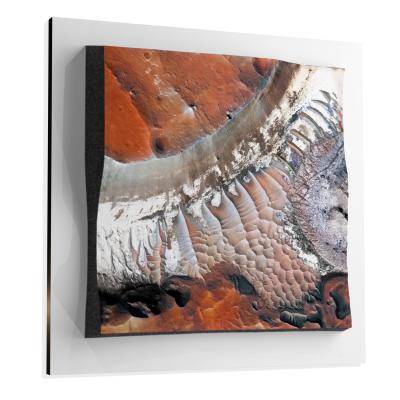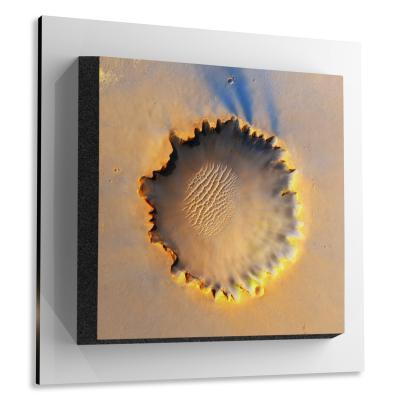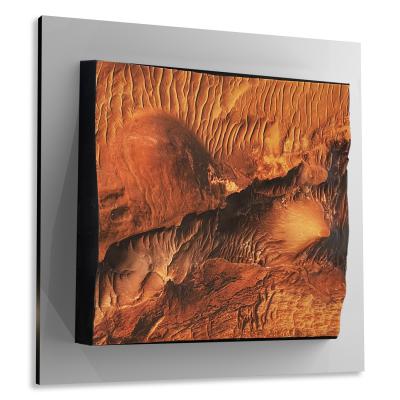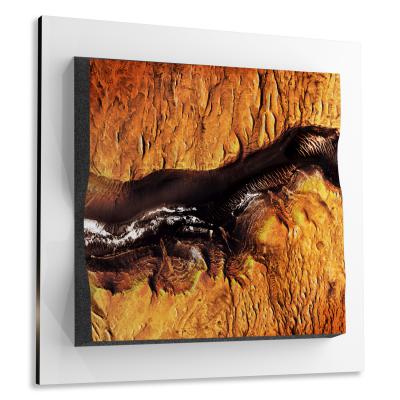Valles Marineris
Valles Marineris
We Build Custom 8K Mars Canvas Prints of Valles Marineris
Did you know we make
custom
8K Mars Canvas Prints

and
3D Marscapes

Valles Marineris
Valles Marineris, frequently dubbed the “Grand Canyon of Mars,” is not just a remarkable geological feature on the Martian landscape but is a colossal confirmation to the planet’s tumultuous past. Spanning a vast expanse, it overshadows Earth’s Grand Canyon in both magnitude and sheer awe-inspiring beauty. The enormity of Valles Marineris – its breadth, depth, and the intricate network of channels and ridges – provides a veritable canvas upon which the chronicles of Mars’ geological history are etched.
While Earth’s Grand Canyon is a result of millions of years of erosional forces primarily from water, the origins and development of Valles Marineris remain a topic of debate and fascination among scientists. The very scale of this Martian chasm poses exciting and intricate questions: Was it formed by tectonic forces pulling the Martian crust apart, or is it the result of aeolian and other erosional processes?
Furthermore, the walls and floor of Valles Marineris are a trove of geological data, showcasing layered terrains, ancient river valleys, and evidence of landslides. These features suggest varied climatic and geological epochs, possibly hinting at periods when water might have flowed on the Martian surface. The very presence of this canyon system reignites discussions and speculations about Mars’ hydrological past. Was the Red Planet once adorned with rivers, lakes, or even oceans? The sheer depth and intricacy of Valles Marineris beckon scientists to delve deeper into its mysteries, making it a focal point in our quest to understand the Red Planet’s history and, potentially, its capacity to harbor life.
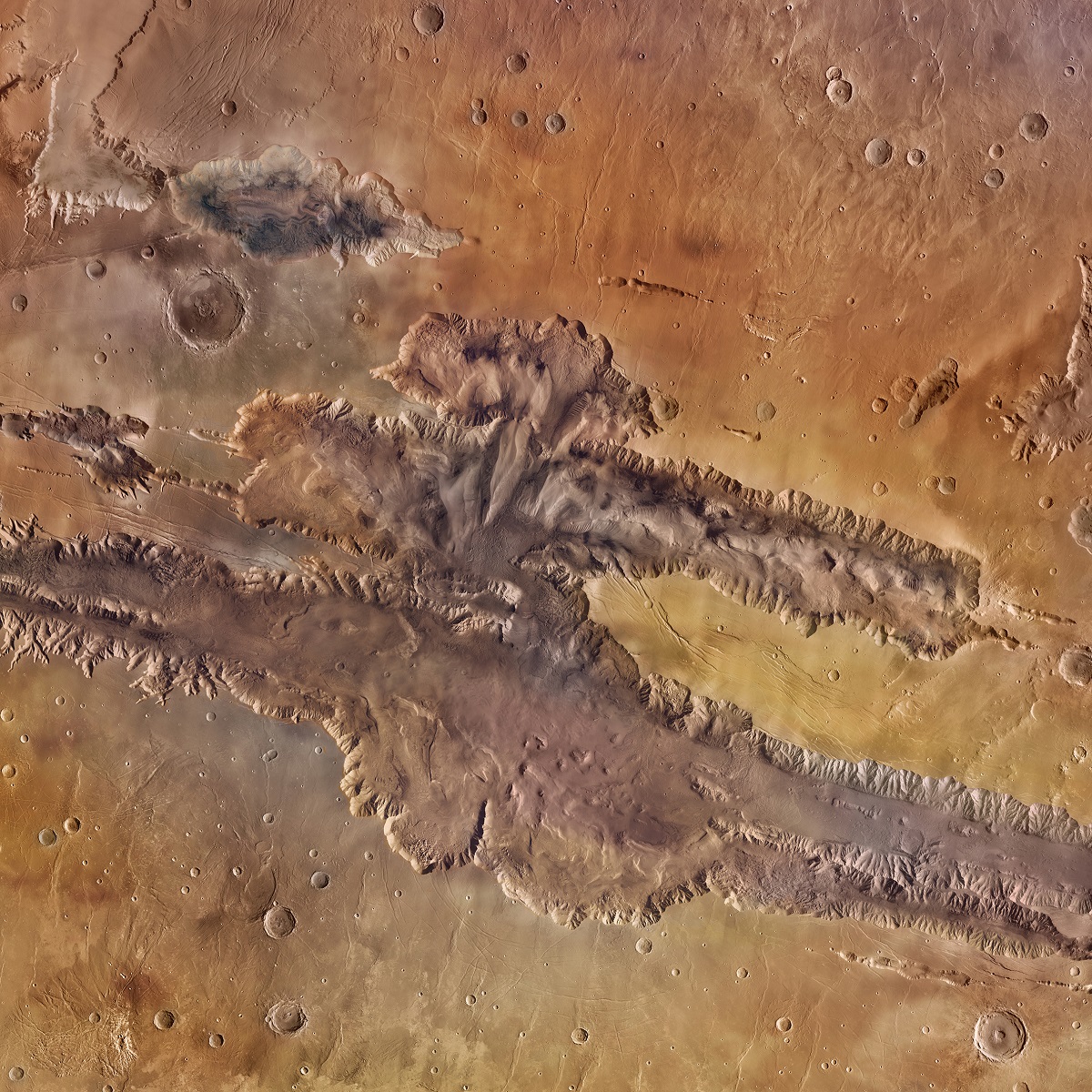 Valles Marineris
Valles Marineris
Historical Observations and Naming
Valles Marineris, named after the Mariner 9 mission that first discovered it in 1971, exemplifies the advancements in space exploration technology. Before the Mariner 9 mission, our understanding of Martian topography was limited. Earlier missions were impeded by massive dust storms, but Mariner 9 waited out the storm and started sending clearer images of the Martian surface. Among these images was the grandeur of an enormous canyon system that would later be named Valles Marineris. The name, which translates to “Mariner Valleys,” pays homage to the mission that brought this marvel to our attention. Over the decades, this feature has been a focal point for Mars exploration, its name constantly reminding us of our initial forays into Martian observation.
Geographical Location
Valles Marineris, an awe-inspiring scar on the Martian surface, dominates the equatorial region of the Red Planet. This gigantic canyon system, with a length spanning approximately 4,000 km (roughly 2,500 miles), surpasses the size of any canyon on Earth. To put this in perspective, it is nearly the same length as the continental United States from its eastern seaboard to its west coast. At its most profound chasms, Valles Marineris plunges to staggering depths of up to 11 km (7 miles), dwarfing the Grand Canyon of Earth, which seems minuscule in comparison. This monumental geological feature begins in the western reaches of Mars with the maze-like region known as Noctis Labyrinthus. From there, it continues its journey eastward, eventually giving way to a series of interconnected chasms, canyons, and chaotic terrains that mark its terminus. Covering nearly one-fifth of the planet’s equatorial circumference, Valles Marineris is more than just a canyon; it’s a colossal testament to the geological forces that have shaped Mars over eons.
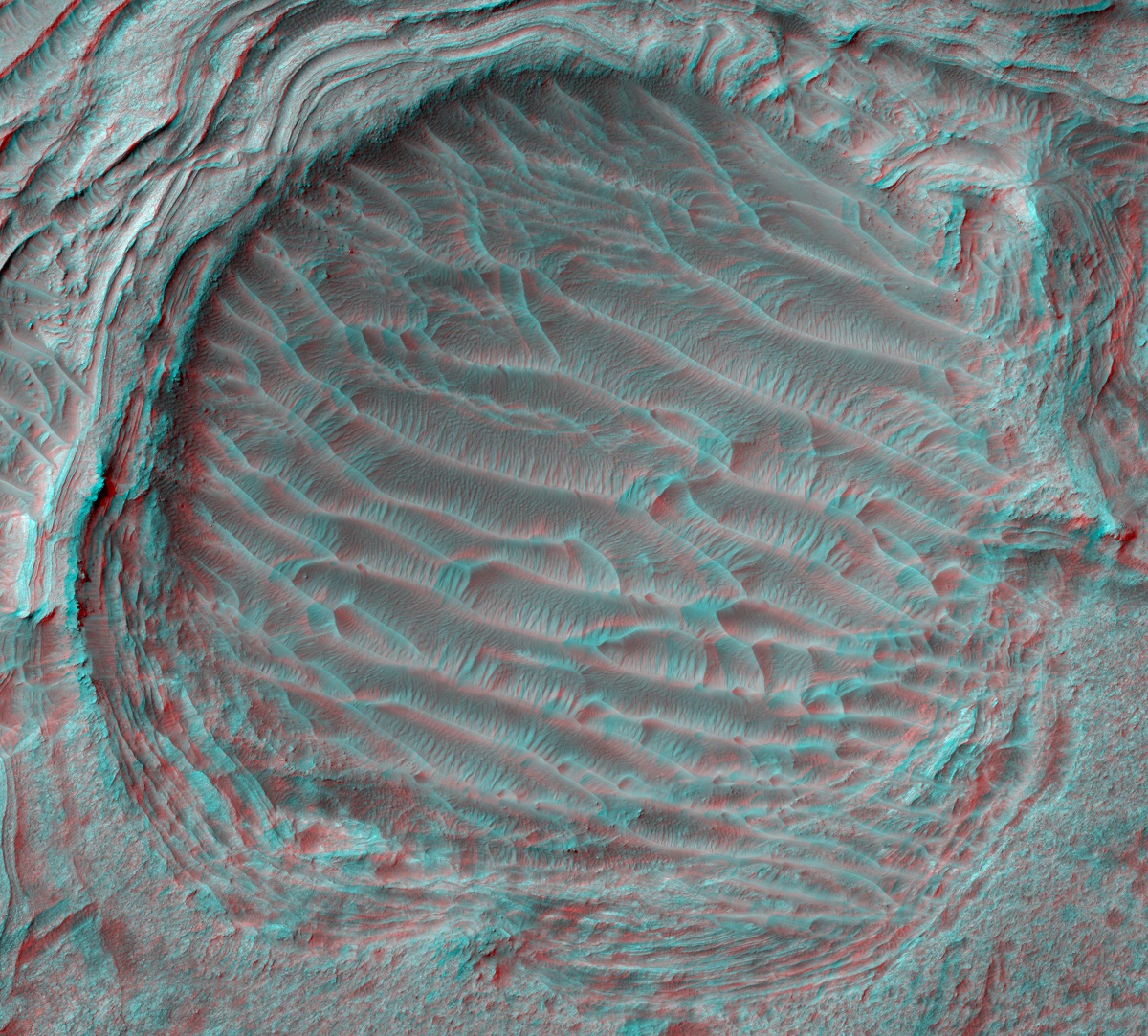 Sedimentary Rocks in Valles Marineris
Sedimentary Rocks in Valles Marineris
Significant Geographic Areas
Canyons Within Valles Marineris
Valles Marineris, often dubbed the “Grand Canyon of Mars,” is an incredibly expansive canyon system that dominates the Martian equatorial region. This massive chasm dwarfs any canyon on Earth in terms of length, width, and depth. Within this majestic system, several noteworthy chasms or canyons stand out due to their unique features and contributions to our understanding of Martian geology:
Noctis Labyrinthus: Serving as the gateway to Valles Marineris, Noctis Labyrinthus lies at its western extremity. This intricate maze consists of numerous intersecting valleys, box canyons, and large fractures, making it appear like a labyrinth. Its evocative name “Noctis Labyrinthus” beautifully translates to “labyrinth of the night,” encapsulating its enigmatic nature.
Ius Chasma: Further east from Noctis Labyrinthus, Ius Chasma carves a significant path across the Martian surface. Spanning more than 1,000 kilometers, this canyon is known for its isolated and profound depth. It showcases a range of intriguing geological features, many of which are still subjects of active research.
Tithonium Chasma: A slender and elongated canyon, Tithonium Chasma lies to the west within the Valles Marineris complex. Its linear formation suggests past tectonic activities and is a testament to the dynamic geological past of Mars.
Melas Chasma: Arguably one of the most investigated canyons, Melas Chasma is the broadest section of Valles Marineris. This chasm presents a treasure trove of geological wonders, including evidence of ancient lakes and rich mineral deposits, pointing towards prolonged interactions with liquid water in Mars’ history.
Candor Chasma: Adjacent to Melas and positioned to its north, Candor Chasma is distinguished by its multilayered terrain. The varied material strata hint at changing environmental conditions over time, with each layer serving as a page in Mars’ extensive geological book.
Ophir Chasma: Situated to the north of Candor Chasma, Ophir is a prominent canyon distinguished by its vertiginous cliffs and deep ravines. Its complex topography offers clues about the erosional processes and tectonic activities on Mars.
Coprates Chasma: Nestled in the heart of Valles Marineris, Coprates Chasma is marked by its deep recesses and evidence of massive landslides. This section provides a window into the internal structural changes and events that have reshaped the Martian surface over aeons.
Ganges Chasma: Lying to the eastern edge of the system, Ganges Chasma is significant for its mineralogical composition. Indicators of hydrated minerals suggest a history dotted with episodes of aqueous activity.
Beyond these major canyons, Valles Marineris is speckled with numerous smaller canyons, chasms, and valleys, each brimming with distinct geological tales. Their combined narratives weave the grand tapestry of Mars’ geological past, making Valles Marineris a focal point for planetary scientists, geologists, and astrobiologists worldwide. See our Top 10 Deepest Canyons on Mars for more information.
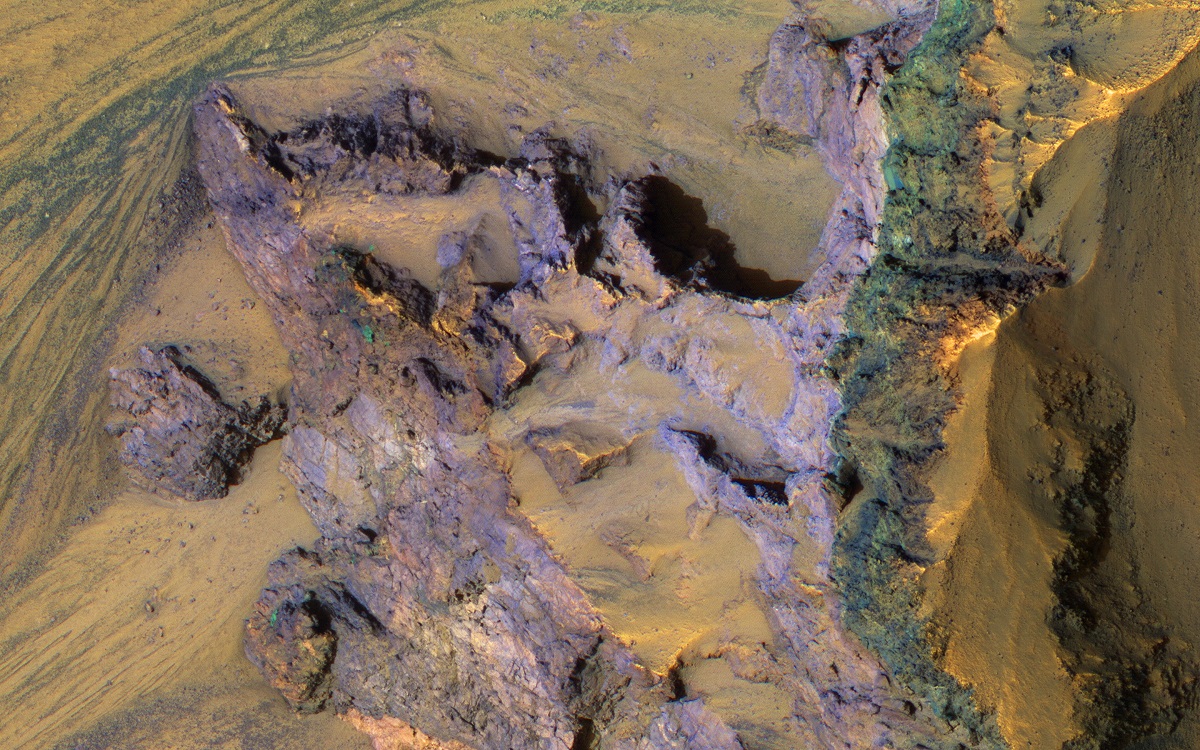 North Wall of Ganges Chasma within Valles Marineris
North Wall of Ganges Chasma within Valles Marineris
Craters Near Valles Marineris
Valles Marineris also showcases an array of craters which pepper both the canyon’s expanse and its surrounding areas. These craters, vestiges of Martian history, have been transformed over eons by a myriad of geologic processes, including tectonic activities, erosive forces, and the deposition of sediments. This interplay of processes, directly and indirectly linked to the creation and transformation of Valles Marineris, has rendered unique characteristics to each crater. Here are some of the more distinguished craters in proximity to, or within, Valles Marineris:
Orson Welles Crater: This substantial crater, which measures approximately 124.5 kilometers across, is situated to the south of the eastern extremity of Valles Marineris. Beyond its sheer size, the Orson Welles Crater is intriguing due to its prominent central peak and layers that suggest sedimentary deposition, hinting at past geologic and possibly aqueous activities.
Echus Chasma Crater: Positioned to the north of Valles Marineris, the Echus Chasma region hosts a vast depression resembling a crater. Its topography, linked with channels that weave their way across the surface, furnishes compelling evidence of the once-prevailing water flow and its role in carving the Martian landscape.
Melas Chasma Craters: The Melas Chasma, a distinctive segment of Valles Marineris, is home to a multitude of smaller craters. Time, coupled with erosion, landslides, and the continuous deposition of sediments, has left an indelible mark on these craters, reshaping their original forms and weaving them seamlessly into the narrative of the larger canyon system.
Ius Chasma Craters: Echoing the geological tale of Melas Chasma, the Ius Chasma region also plays host to several smaller craters. These have undergone significant morphological changes due to the very processes responsible for sculpting the grand canyon, providing a microscopic view of the dynamic forces at play.
Although the vast canyons and chasms of Valles Marineris are undeniably its most defining features, the sprinkling of craters within and around its periphery adds layers of complexity to the story. The state and characteristics of these craters, whether pristine, eroded, or sediment-filled, serve as geological footprints, aiding scientists in unraveling the intricate history of both the canyon system and the broader Martian landscape. For more information, see our Top 10 Largest Craters on Mars.
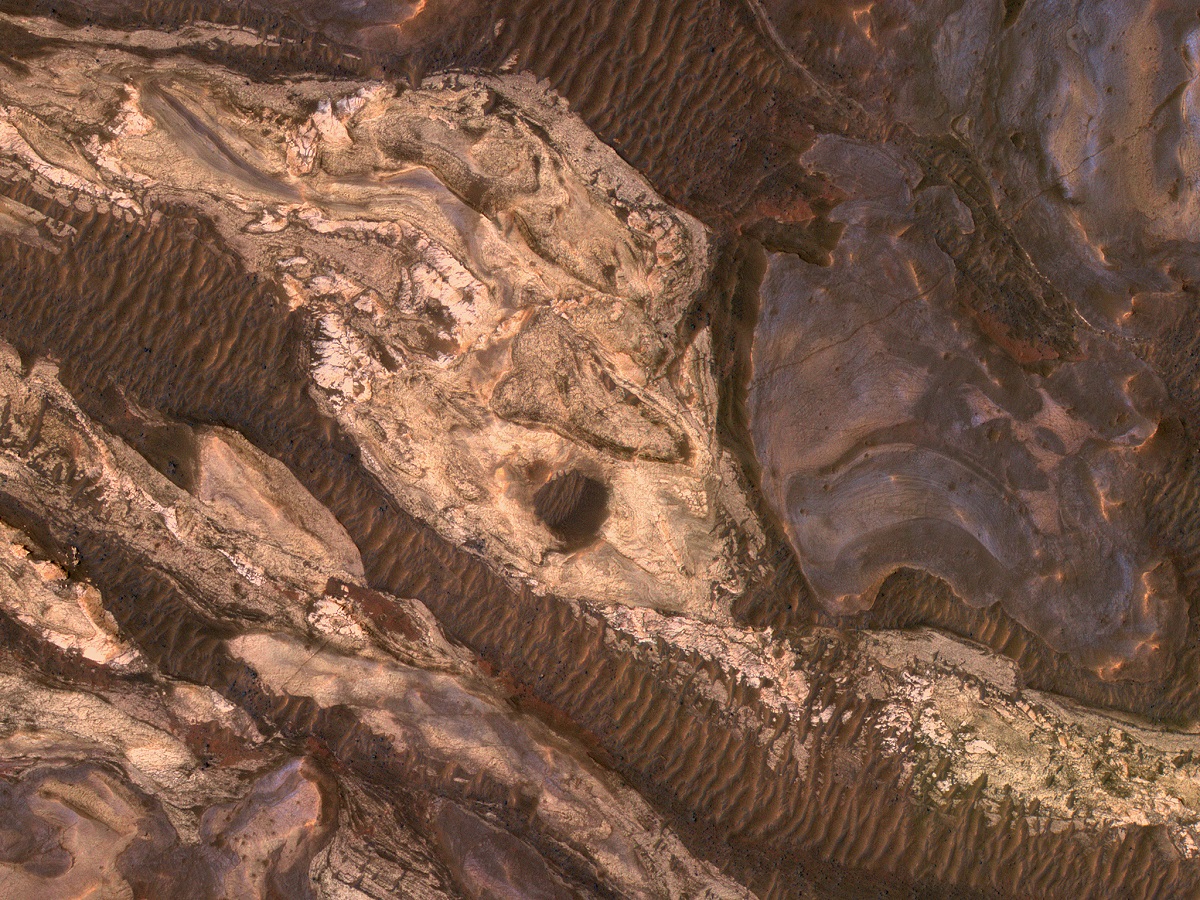 Ius Chamas within Valles Marineris
Ius Chamas within Valles Marineris
Dunes Within Valles Marineris
Valles Marineris, often heralded as the “Grand Canyon of Mars,” stands out as one of the most captivating and massive canyon systems on the Red Planet. Its sprawling chasms and intricate network of valleys dominate its landscape. Yet, within and around this geological marvel, intricate fields of dunes emerge, painting a rich tapestry that unveils
the intricate dance of Martian winds and offers glimpses into the planet’s geological and climatic narratives.
Dunes are a common feature on the Martian landscape, gracing its plains, craters, and valleys. Yet, the dunes nestled within Valles Marineris hold a distinct fascination. Their placement inside this vast canyon system provides them with a unique environment, where the winds that sculpt them are influenced by the towering canyon walls and valleys. These dunes become invaluable recorders, capturing the history of wind directions, origins of sediments, and shifts in environmental conditions over millennia.
Some of the significant dune fields located in or around the Valles Marineris:
Ophir and Candor Chasma Dunes: These chasms, integral parts of the Valles Marineris system, are adorned with fascinating dune fields. Scientists theorize that the sands forming these dunes likely originated from the erosion of the adjacent canyon walls or from layered deposits that the canyons cradle. These dunes, like ancient storytellers, speak of the forces that shaped them.
Melas Chasma Dunes: The dunes within Melas Chasma are a study in contrasts. Dark-toned dunes lie juxtaposed against the lighter sediments of what many believe are remnants of ancient lake deposits. This striking contrast isn’t just a visual treat; it is a hint, a clue pointing towards the shifts in environmental conditions the region might have witnessed.
Noctis Labyrinthus Dunes: This maze-like labyrinth, acting as a bridge between the vast Tharsis volcanic plateau and Valles Marineris, is dotted with dunes. Amidst the fractured terrains and deep valleys, these dunes offer insights into the patterns of Martian winds, their direction, and the paths through which sediments have journeyed.
Dunes on Plateaus: The vastness of Valles Marineris is punctuated by plateaus and mesas. These elevated regions, standing sentinel between the canyons, also play host to dune fields, adding another layer to the region’s complex geological tapestry.
The dunes within Valles Marineris aren’t just intriguing because of their inherent beauty or the secrets they hold. Their existence within such constrained and sheltered terrains means they experience wind patterns that are vastly different from those on the more expansive plains of Mars. This leads to the creation of dune shapes and orientations that might not be found elsewhere on the planet.
To truly comprehend Mars’s geological saga and its climatic shifts, these dunes are invaluable. Their shapes, the materials they’re made of, and their evolving patterns over Martian years (captured meticulously by orbiters) become vital chapters in the grander story of Mars. For those who seek to understand the history and potential future of the Red Planet, these dunes in the heart of Valles Marineris beckon with tales waiting to be unraveled. See our Top 10 Largest Sand Dunes on Mars for more information.
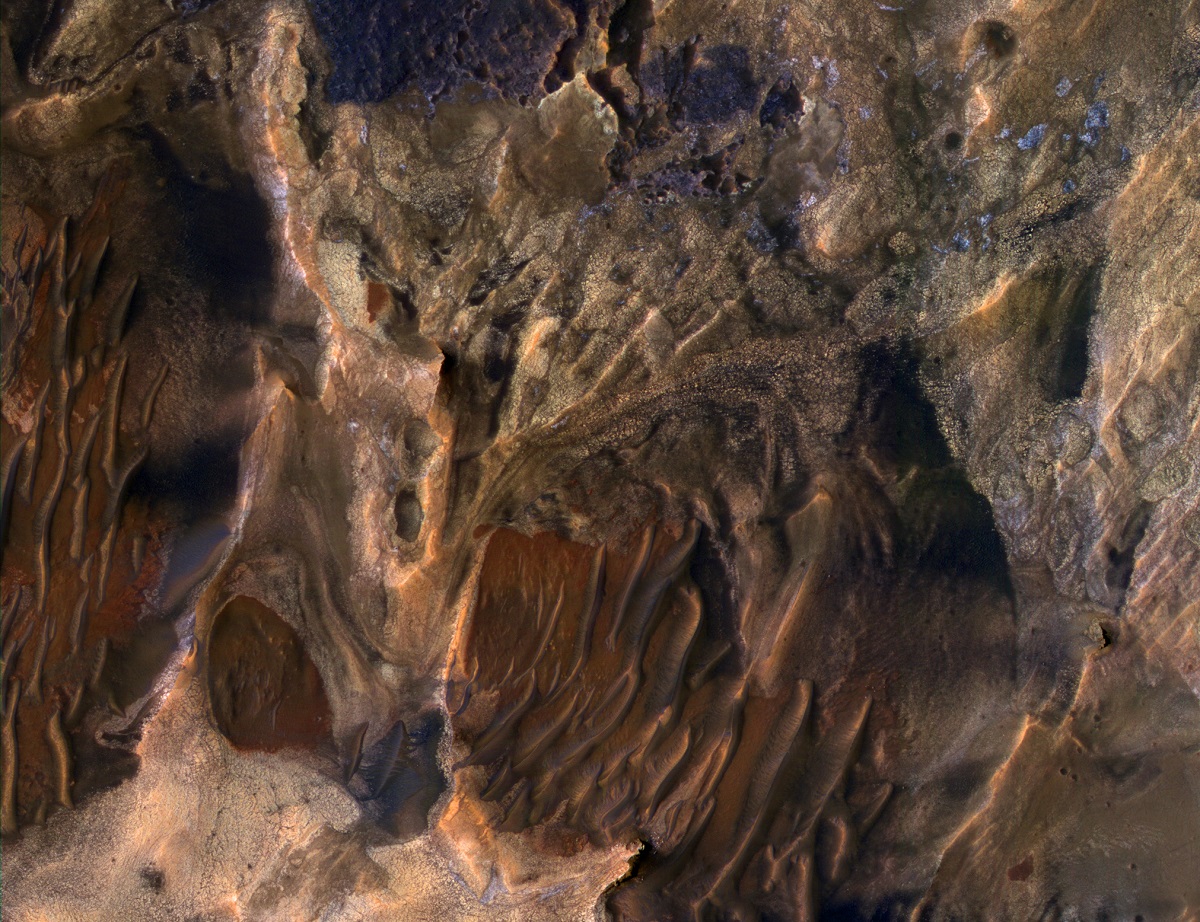 Diverse Deposits in Melas Chasma
Diverse Deposits in Melas Chasma
Ancient Lakes in Valles Marineris
There is a large number of scientific studies, grounded in comprehensive data acquired from various Mars orbiters, that provide compelling indications of ancient lakes and past water activity permeating multiple portions of this expansive canyon system. The inferred presence of these ancient water bodies and the traces left behind from their existence form pivotal elements in piecing together the intricate hydrological tapestry of Mars’s past.
Diving deeper into the canyons of Valles Marineris, several notable chasms have garnered attention due to their apparent testimonies of historical water presence:
Melas Chasma: Among the most profound and vast portions of Valles Marineris, Melas Chasma is a treasure trove for geologists and astrobiologists. Intriguing formations such as terraces, deltas, and specific sedimentary structures identified within this chasm bear the hallmarks of an ancient lake’s footprint. The sedimentary layers further intimate at epochs when water might have stagnated, painting a vibrant picture of the Martian past.
Candor Chasma: Echoing the stories whispered by Melas, Candor Chasma too is adorned with stratified deposits. Certain sections of these layers have led a faction of the scientific community to speculate about their origins, possibly hinting at erstwhile lakes or even shallow marine environments.
Juventae Chasma: This intriguing canyon houses an abundance of sulfate deposits, compounds that are often birthed in the embrace of liquid water, particularly under conditions skewed towards acidity. The distinctive shapes and arrangements of terrains within Juventae provide tantalizing hints of sediment accumulation within static water bodies.
Eos Chasma: Preserved within Eos Chasma are intriguing fan-shaped sediment structures, possibly telling tales of ancient waters that meandered into a resting lake within its confines.
While the clues embedded within Valles Marineris sing a harmonious tune of Mars’s watery past, it’s imperative to approach this with a balanced perspective. Clear-cut evidence, akin to the unequivocal shoreline features that grace Earth’s ancient lakebeds, remains elusive in the Martian context. Hence, the attribution of certain Martian structures to historical water activity remains ensconced within realms of scholarly debate and investigation. For more information, see our Top 10 Largest Lakes on Mars.
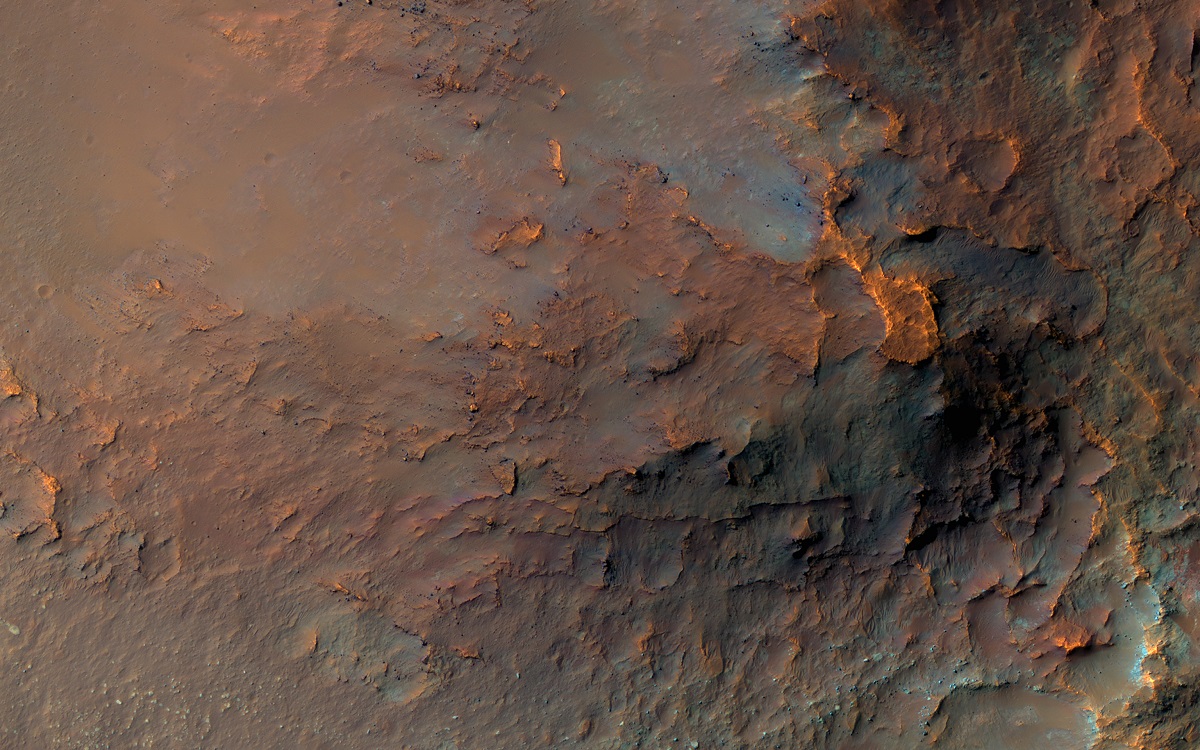 A Colorful Landslide in Eos Chasma within Valles Marineris
A Colorful Landslide in Eos Chasma within Valles Marineris
Mountains Near Valles Marineris
Surrounding the immediate vicinity of Valles Marineris are some of Mars’ most intriguing geological marvels, consisting of towering volcanoes, high plateaus, and vast plains. Some of these noteworthy geological features include:
Tharsis Region: This massive bulge on the Martian surface known as Tharsis Province and situated northwest of Valles Marineris, is essentially a volcanic plateau that boasts several of the most gigantic volcanoes ever discovered in our solar system, underscoring Mars’ turbulent volcanic past.
Olympus Mons: Nestled within the Tharsis region, Olympus Mons stands proudly as not only the tallest volcano on Mars but also the most colossal volcanic mountain known to mankind, dwarfing every terrestrial mountain by rising nearly three times the height of Mount Everest.
Ascraeus Mons, Pavonis Mons, and Arsia Mons: Often regarded as the Tharsis Montes, these are three other mammoth shield volcanoes that are situated in a line in the Tharsis region. Each one, with its unique history, contributes to our understanding of the volcanic processes that shaped the Martian surface.
Syrtis Major Planum: This sprawling shield volcano, located to the northeast of Valles Marineris, has an intriguing dark hue that’s been known since telescopic observations from Earth. Its volcanic history offers another piece in the puzzle of Mars’ geothermal activity.
Noctis Labyrinthus: Existing as a dramatic prelude to the canyons of Valles Marineris, the Noctis Labyrinthus, or “Labyrinth of the Night,” is an intricate network of canyons and valleys. But interspersed between these deep troughs are elevated landforms, plateaus, or mesas, offering a stark contrast to the deep chasms surrounding them.
While Valles Marineris itself is a testament to the grandeur of Martian geological processes, its neighboring regions, with their towering volcanoes and raised plateaus, serve as an awe-inspiring backdrop that narrates the diverse geology and tumultuous past of the Red Planet. For more information, see our Top 10 Largest Mountains on Mars.
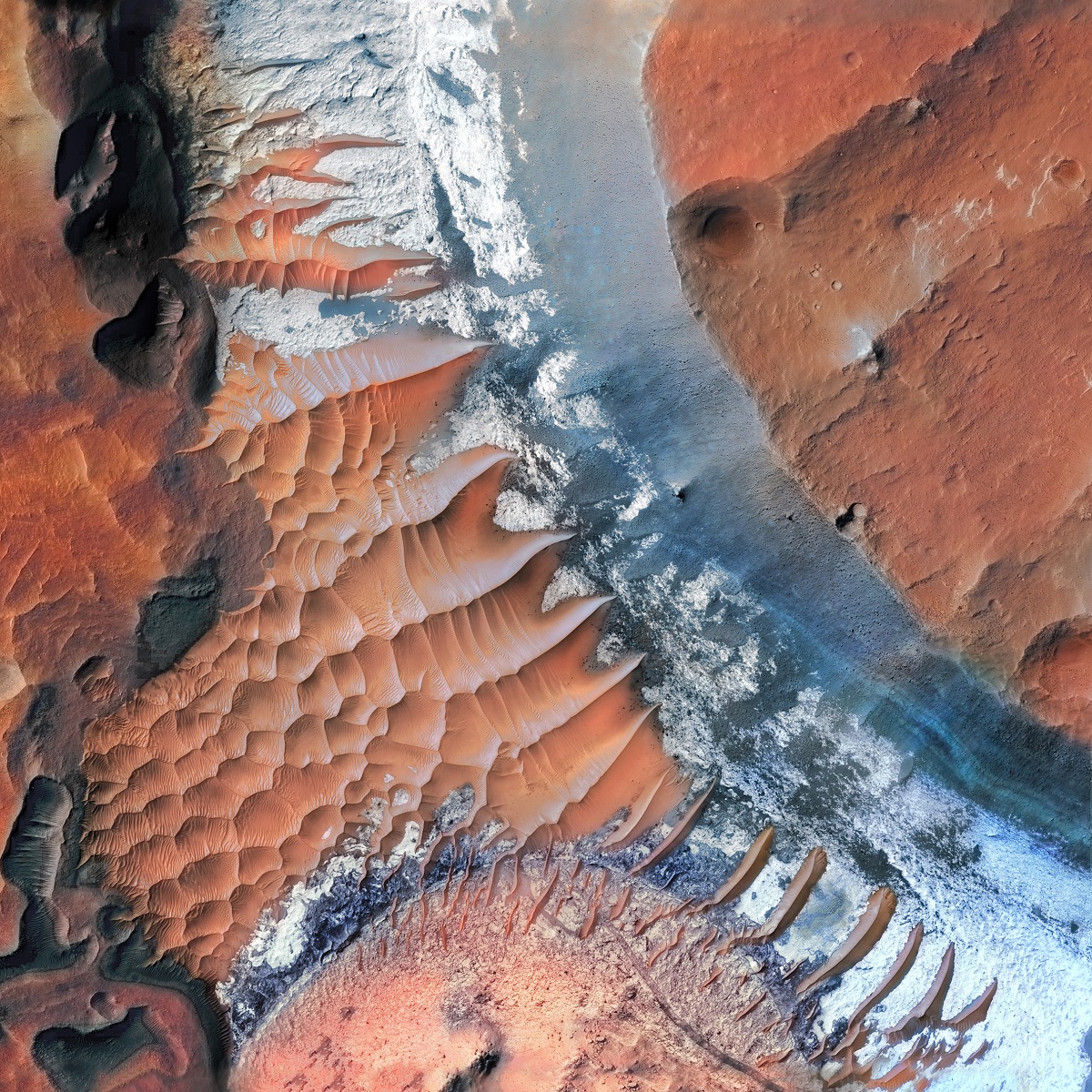 Noctis Labyrinthus within Valles Marineris
Noctis Labyrinthus within Valles Marineris
Comparative Analysis with Earth’s Geology
At first glance, the Valles Marineris might be likened to Earth’s Grand Canyon due to its vastness and depth. However, the Grand Canyon, primarily formed through water erosion, pales in comparison both in length and depth. While the Grand Canyon stretches for about 446 km, Valles Marineris extends over 4,000 km. The East African Rift, another Earth feature, offers a closer analogy in terms of formation. The rifting in East Africa is due to tectonic forces pulling apart the continental crust. Similar tectonic processes might have played a role in the formation of Valles Marineris, though on a much grander scale. Yet, even with these comparisons, the unique conditions and scale of Valles Marineris set it apart, making it a truly Martian phenomenon.
Advertisement
Sample Marscapes
Geological Composition
Diving into the walls of Valles Marineris is akin to reading the intricate chapters of Mars’ geological diary. These towering cliffs and ridges lay bare strata that encapsulate billions of years of the planet’s tumultuous history. Within this vast timeline of rock, scientists have been able to decipher various compositions, each telling a unique tale of Mars’ past. Among these are the dark, iron-rich basalts that point to a history of volcanic eruptions and lava flows. These basaltic layers, often interwoven with other rock types, provide evidence of Mars’ once fiery interior and its volcanic activities. On the other hand, the discovery of sulfates and clays embedded within the canyon walls paints a different picture. These minerals, formed under specific conditions, suggest a time when Mars might have been graced with a wetter, potentially habitable environment. Sulfates, for instance, are typically formed in liquid water under acidic conditions, while clays often form in neutral to alkaline water. The presence of these minerals, juxtaposed with the basalts, highlights the dichotomous nature of Mars’ geological past: from fiery volcanic eruptions to transient periods of flowing water.
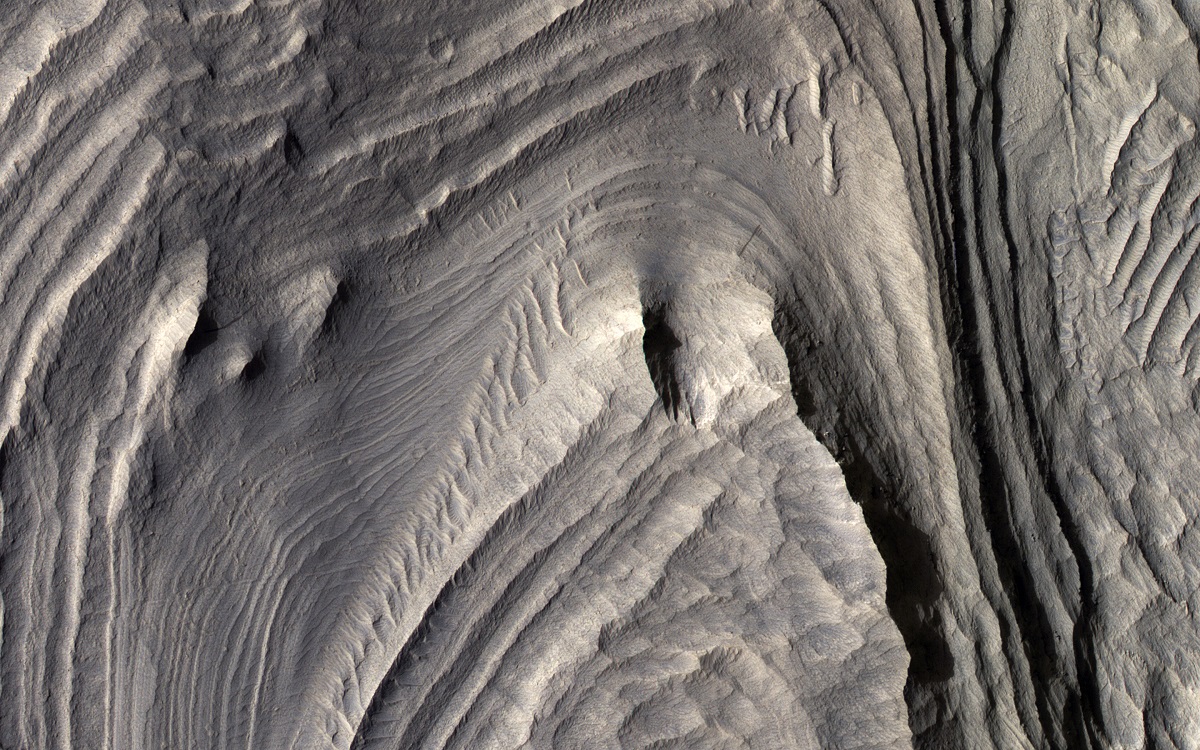 Layered Sediments in Valles Marineris
Layered Sediments in Valles Marineris
Climate Impact
Such an expansive canyon system undeniably impacts local and potentially global Martian climates. The depth and orientation of Valles Marineris can influence wind patterns, creating unique air circulation systems within and around the canyon. During the day, the canyon floor may heat up, causing the air to rise and possibly drawing in winds from the surrounding plateau. At night, the process could reverse. This constant air movement might lead to localized weather phenomena. Additionally, the canyon’s walls and depths provide varying levels of sunlight exposure and shadow, potentially creating microclimates that differ significantly from the surrounding regions.
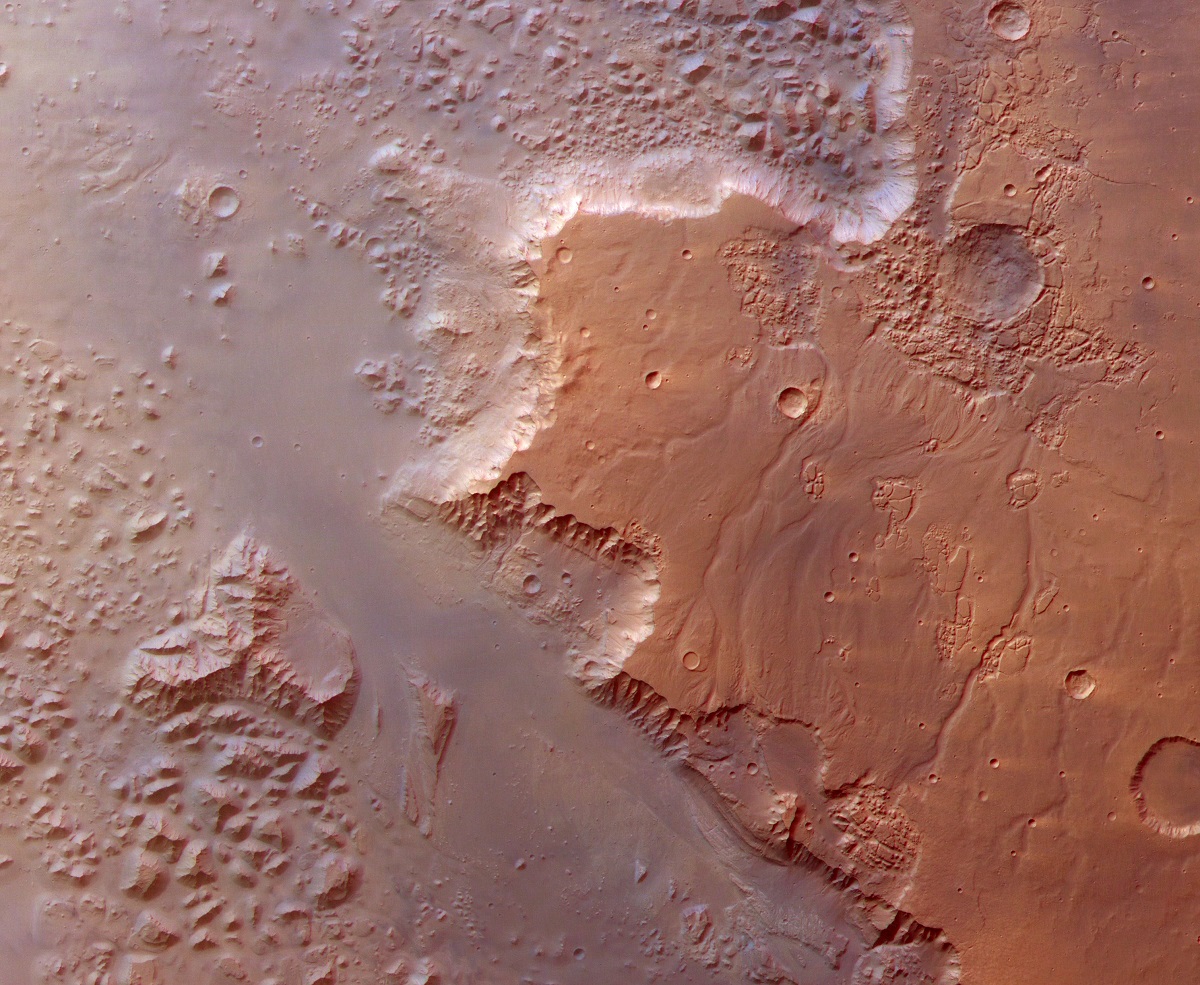 Southern Part of Valles Marineris Called Eos Chasma
Southern Part of Valles Marineris Called Eos ChasmaSignificant Discoveries in Valles Marineris
Evidence of Liquid Water
One of the most profound discoveries within the Valles Marineris is the strong indication of ancient aqueous activity. The detection of hydrated minerals, including various clays and sulfates, supports the canyon’s watery past. Furthermore, the geological layout of the chasm displays features analogous to river valleys, delta systems, and alluvial fans on Earth. These geomorphic patterns allude to a period in Martian history when cascading rivers might have sculpted the landscape, and vast bodies of water could have persisted, reshaping the terrain.
Tectonic Activity
The grandeur of Valles Marineris – its expansive length, breadth, and depth – suggests an intense tectonic history. Theories posit that this enormous rift system could have emerged as Mars’ crust experienced tensional forces, causing it to stretch, crack, and eventually give way, leading to the formation of this awe-inspiring canyon.
Landslides
Scattered across the Valles Marineris are conspicuous signs of colossal landslides. Some of these displaced masses of rock and sediment are so vast they could cover entire cities on Earth. The triggers for these landslides might range from seismic tremors shaking the Martian crust to the sublimation of buried ice, weakening the substrate and causing overlying layers to tumble dramatically.
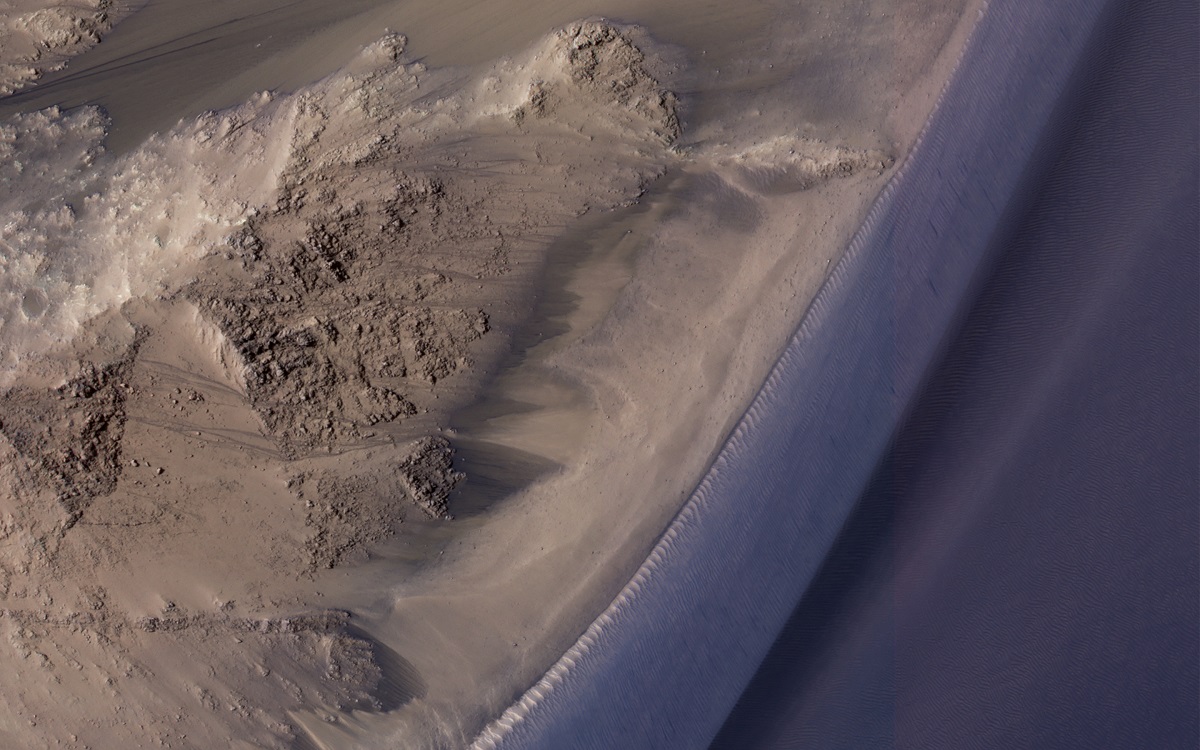 Seasonal Flows in Valles Marineris
Seasonal Flows in Valles Marineris
Scientific Missions to Valles Marineris
The Valles Marineris, given its geological significance and grandeur, has magnetically drawn the attention of numerous space missions, each designed to peel back layers of Martian history:
Viking Orbiters
In the twilight of the 1970s, humanity’s perspective on Mars underwent a seismic shift when the Viking missions beamed back intricate images of the Valles Marineris. These images were the first to reveal the full splendor of this canyon, forever transforming our perception of Martian geology.
Mars Reconnaissance Orbiter (MRO)
The MRO, with its advanced HiRISE camera, has been a cornerstone in Martian exploration. It has charted the labyrinthine terrain of Valles Marineris with unparalleled precision, illuminating myriad geological features and processes that have shaped the canyon over eons.
Mars Express
A testament to international interest in Mars, the European Space Agency’s Mars Express has been instrumental in enriching our understanding of the Red Planet. Armed with the High-Resolution Stereo Camera (HRSC), it has probed the mineralogical intricacies of the Valles Marineris walls, shedding light on the canyon’s compositional evolution.
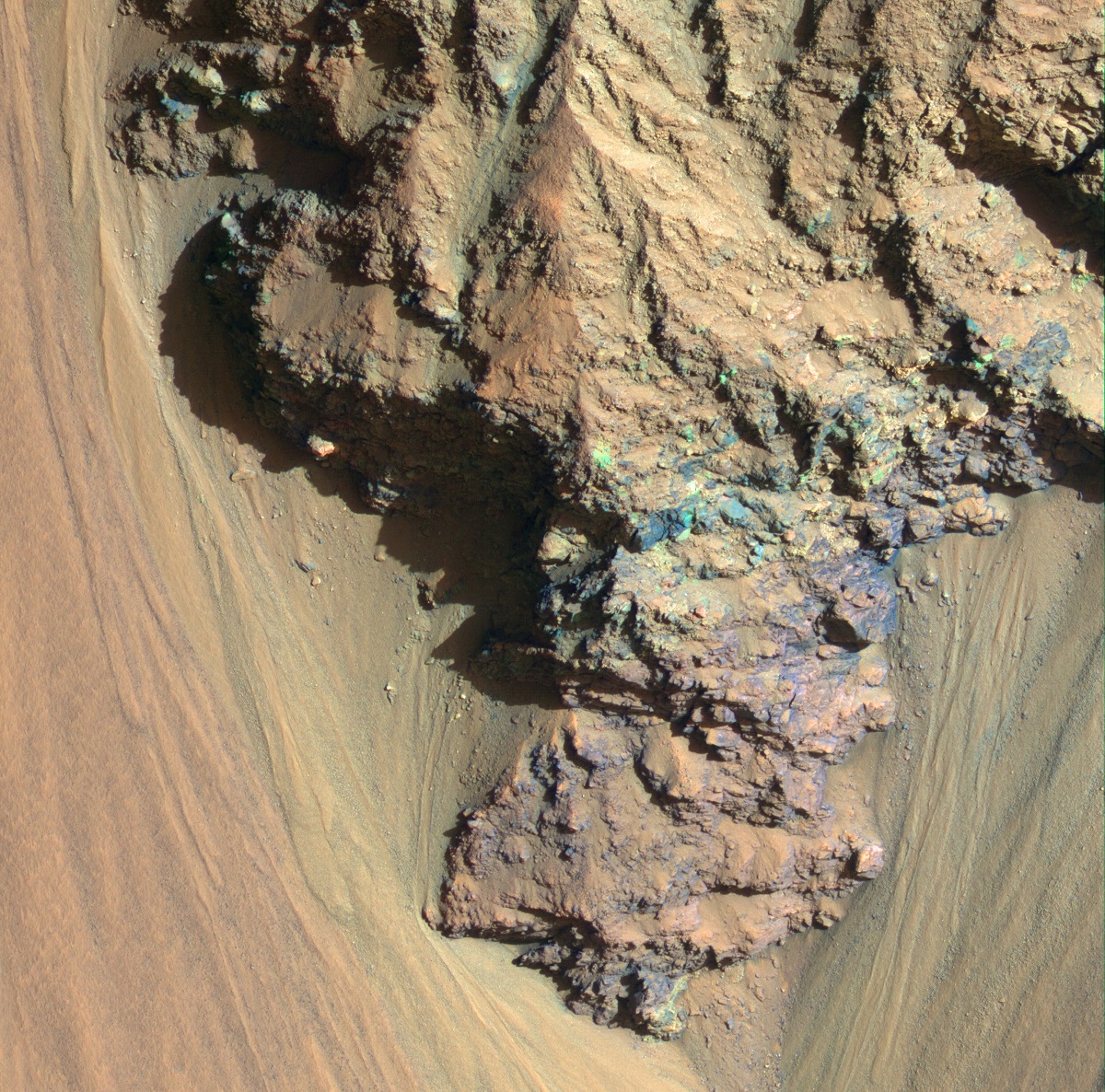 Geologic History Revealed in Valles Marineris
Geologic History Revealed in Valles Marineris
Geomorphological Wonders of Valles Marineris
Valles Marineris is a geological tapestry, woven with a myriad of intricate features. Towering escarpments and precipices loom large over the abyss, while expansive plateaus offer a vantage point to observe the sprawling network of subsidiary canyons that branch out in all directions. The Noctis Labyrinthus, a bewildering maze of intersecting valleys and chasms, stands as evidence of Mars’ dynamic geological past, with signs pointing to both tectonic upheavals and persistent erosion, likely from relentless Martian winds and episodic water flows.
Within the canyon’s depths, the terrain tells tales of molten lava that once surged across the floor, solidifying into vast basaltic plains. In contrast, certain sectors of Valles Marineris showcase sedimentary layers, indicative of periodic deposition events, possibly from water or wind-borne sediments. The enigmatic chaotic terrains, a jumble of disarrayed blocks, ridges, and depressions, evoke imagery of catastrophic collapses – possibly hinting at the dramatic drainage of subterranean water or ice reservoirs in epochs gone by.
Potential for Astrobiology
Valles Marineris, with its evidence of past aqueous activity, is a tantalizing location for astrobiologists. Water is a fundamental prerequisite for life as we know it. The hydrated minerals and features resembling ancient river valleys hint at a past where liquid water was present, potentially offering conditions conducive for life. Furthermore, the sheer depth of the canyon may have sheltered liquid water from the harsher surface conditions, acting as potential oases. If life ever existed on Mars, the diverse environments within Valles Marineris, from its cliffs to its canyon floors, might hold the fossilized evidence or perhaps even microbial life in niche environments.
Technological Challenges
Exploring Valles Marineris presents a myriad of technological challenges. Firstly, the depth of the canyon can impede direct communication with orbiting satellites, necessitating relay stations or novel communication methods. The varied topography, from sheer cliffs to rugged floors, challenges rover mobility. Rovers would need advanced navigation and hazard avoidance systems to traverse this terrain safely. Landing within the canyon is another challenge due to its depth and the potential for strong localized winds and updrafts. Lastly, the sheer size of Valles Marineris means that any mission would only explore a fraction of it at a time, requiring strategic planning to decide which segments of the canyon offer the most scientific value.
Valles Marineris illustrates the dynamic geological history of Mars. Its vast expanse and intricate features chronicle events spanning billions of years, from volcanic eruptions and tectonic shifts to the possible flow of liquid water. As we continue to study this Martian marvel, it not only deepens our understanding of the Red Planet but also stirs our imagination about the possibilities of past life and the potential for future exploration.
Check out our 3D Mars Learning Center for more information on Mars and Valles Marineris. You can also learn more at: NASA Mars Exploration.
More About Mars
Contact us today to learn more about our 3D services and how we can help you achieve your goals.


